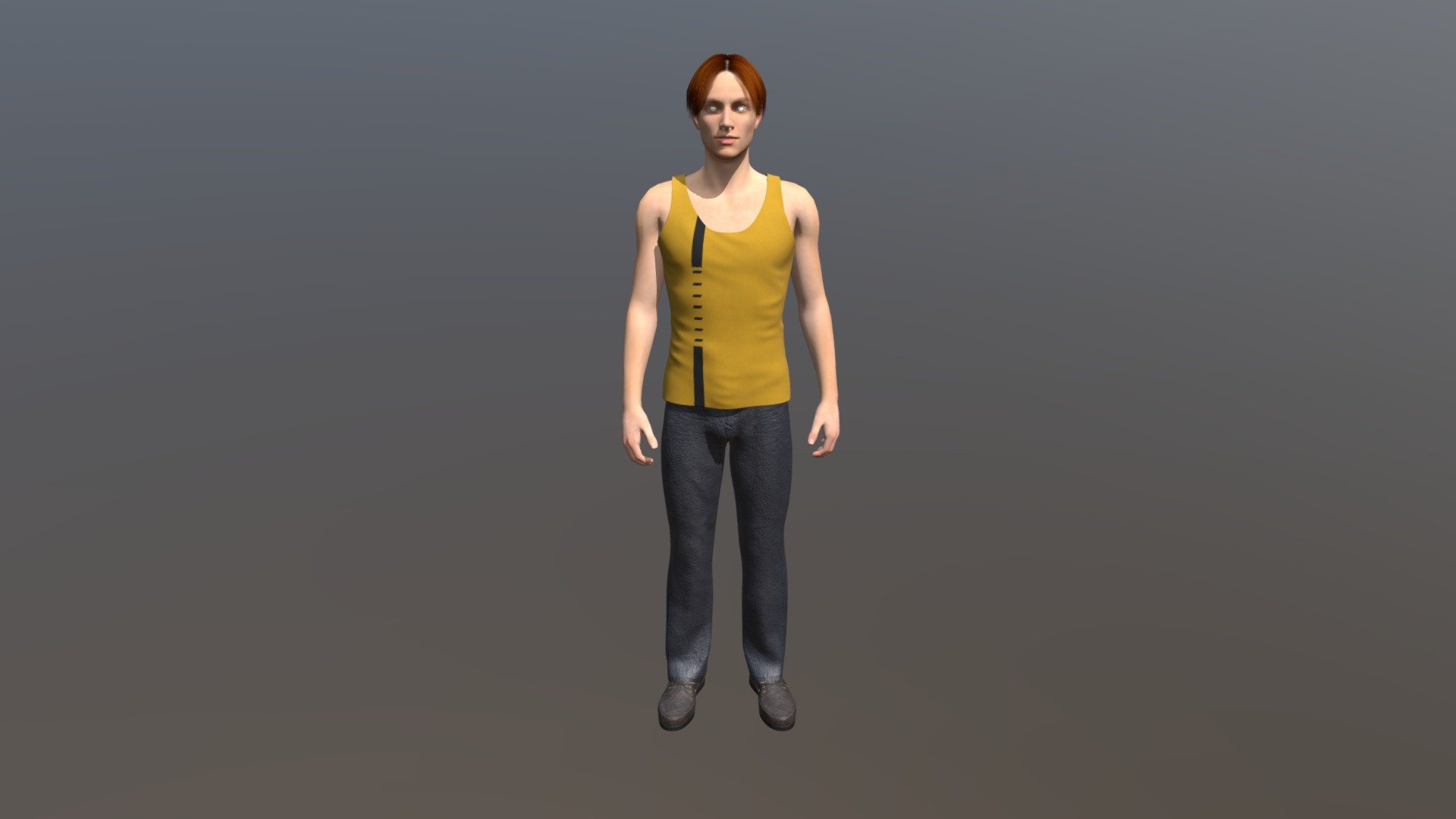
Modelo I
sketchfab
The Sign Language of Ecuador, also known as LSE, is a visual language used by Deaf and hard of hearing individuals in Ecuador. It has its own unique grammar, vocabulary, and syntax. One key aspect of LSE is the alphabet, which consists of 26 handshapes that correspond to the standard Latin alphabet. Each handshape is accompanied by specific finger placements and orientations. The letter "A" in LSE is made by extending the index finger upwards, with the other fingers relaxed. The thumb is placed on top of the middle finger. To form the letter "B", the dominant hand makes a closed fist, with the thumb on top. The non-dominant hand forms an open palm, facing downwards. The letter "C" in LSE is created by touching the tip of the index finger to the wrist of the dominant hand. The fingers are curled and relaxed. To form the letter "D", the dominant hand makes a closed fist, with the thumb on top. The non-dominant hand forms an open palm, facing upwards. The letter "E" in LSE is made by extending the index finger downwards, with the other fingers relaxed. The thumb is placed on the middle finger. To form the letter "F", the dominant hand makes a closed fist, with the thumb on top. The non-dominant hand forms an open palm, facing left. The letter "G" in LSE is created by touching the tip of the index finger to the wrist of the dominant hand. The fingers are curled and relaxed. To form the letter "H", the dominant hand makes a closed fist, with the thumb on top. The non-dominant hand forms an open palm, facing right. The letter "I" in LSE is made by extending the index finger upwards, with the other fingers relaxed. The thumb is placed on the middle finger. To form the letter "J", the dominant hand makes a closed fist, with the thumb on top. The non-dominant hand forms an open palm, facing right. The letter "K" in LSE is created by touching the tip of the index finger to the wrist of the dominant hand. The fingers are curled and relaxed. To form the letter "L", the dominant hand makes a closed fist, with the thumb on top. The non-dominant hand forms an open palm, facing left. The letter "M" in LSE is made by extending the index finger downwards, with the other fingers relaxed. The thumb is placed on the middle finger. To form the letter "N", the dominant hand makes a closed fist, with the thumb on top. The non-dominant hand forms an open palm, facing right. The letter "O" in LSE is created by touching the tip of the index finger to the wrist of the dominant hand. The fingers are curled and relaxed. To form the letter "P", the dominant hand makes a closed fist, with the thumb on top. The non-dominant hand forms an open palm, facing left. The letter "Q" in LSE is made by extending the index finger upwards, with the other fingers relaxed. The thumb is placed on the middle finger. To form the letter "R", the dominant hand makes a closed fist, with the thumb on top. The non-dominant hand forms an open palm, facing right. The letter "S" in LSE is created by touching the tip of the index finger to the wrist of the dominant hand. The fingers are curled and relaxed. To form the letter "T", the dominant hand makes a closed fist, with the thumb on top. The non-dominant hand forms an open palm, facing left. The letter "U" in LSE is made by extending the index finger downwards, with the other fingers relaxed. The thumb is placed on the middle finger. To form the letter "V", the dominant hand makes a closed fist, with the thumb on top. The non-dominant hand forms an open palm, facing right. The letter "W" in LSE is created by touching the tip of the index finger to the wrist of the dominant hand. The fingers are curled and relaxed. To form the letter "X", the dominant hand makes a closed fist, with the thumb on top. The non-dominant hand forms an open palm, facing left. The letter "Y" in LSE is made by extending the index finger upwards, with the other fingers relaxed. The thumb is placed on the middle finger. To form the letter "Z", the dominant hand makes a closed fist, with the thumb on top. The non-dominant hand forms an open palm, facing right. In LSE, each letter has its own unique sign, and the order of the letters is reversed in some cases. For example, the letter "A" is signed first, followed by "B", then "C", and so on.
With this file you will be able to print Modelo I with your 3D printer. Click on the button and save the file on your computer to work, edit or customize your design. You can also find more 3D designs for printers on Modelo I.
